Hello Santa |
|||||||
 |
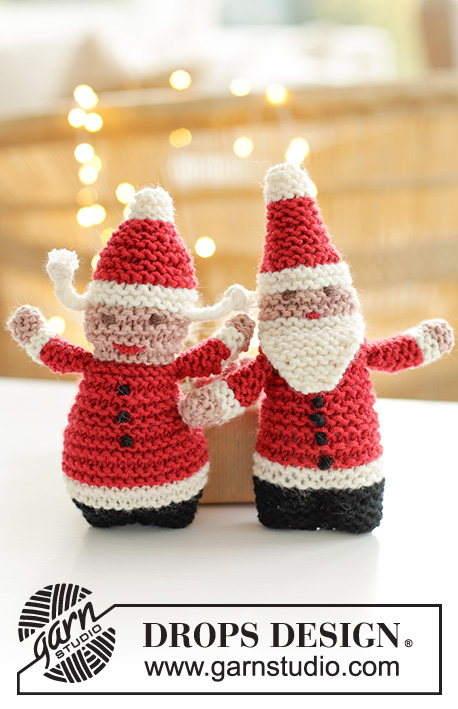 |
||||||
Knitted Santas for babies and children in DROPS Merino Extra Fine. The pieces are worked bottom up, with garter stitch and embroidered faces.
DROPS Baby 46-21 |
|||||||
|
------------------------------------------------------- EXPLANATIONS FOR THE PATTERN: ------------------------------------------------------- GARTER STITCH (worked back and forth): Knit all rows. 1 ridge = knit 2 rows. PATTERN: See diagrams A and B. The diagrams show how to work the embroidered stitches. ------------------------------------------------------- START THE PIECE HERE: ------------------------------------------------------- SANTA – SHORT OVERVIEW OF THE PIECE: The piece is worked back and forth, first the arms, then the body is worked from the legs to the top of the hat, working in the arms as you go. Mr Santa has a beard and Mrs Santa has plaits. The pieces are worked in garter stitch and sewn together to finish, with embroidered faces. MR SANTA: ARMS: Cast on 8 stitches with needle size 3.5 MM = US 4 and color desert rose DROPS Merino Extra Fine. Work GARTER STITCH – read description above, as follows: 2 ridges with color desert rose, 2 ridges with color off white and 4 ridges with color red. REMEMBER THE KNITTING GAUGE! Continue as follows with color red: ROW 1 (right side): Knit ROW 2: Bind off 2 stitches, knit until 2 stitches remain, bind off the next 2 stitches. Cut the yarn approx. 25 cm = 9¾" from piece (to sew the arm with), and pull the yarn into the last stitch. Slip the 4 remaining stitches on a thread or another needle. Work 1 more arm in the same way. LEGS AND BODY: Cast on 24 stitches with needle size 3.5 MM = US 4 and color black. Work 4 ridges. Change to color off white, work 2 ridges. Change to color red and work garter stitch until the piece measures 6½ cm = 2½" (approx. 9 ridges with color red – finish after a row from the wrong side). Now work in the arms with color red from the right side as follows: Knit 4 stitches from the body, knit the next 4 stitches on the body together with the 4 stitches on one arm (knitting together 1 stitch from the body and 1 from the arm each time), knit 8 stitches from the body, knit the next 4 stitches on the body together with the 4 stitches on the other arm, knit the last 4 stitches from the body. Turn and knit back from the wrong side. Lay the piece to one side and work the beard. BEARD: Cast on 4 stitches with needle size 3.5 MM = US 4 and color off white. Work back and forth as follows: ROWS 1-2: Knit. ROW 3: Knit 1, 1 yarn over, knit 2, 1 yarn over, knit 1 = 6 stitches. ROWS 4-6: Knit (yarn overs knitted twisted to avoid holes). ROW 7: Knit 1, 1 yarn over, knit 4, 1 yarn over, knit 1 = 8 stitches. ROWS 8-10: Knit (yarn overs knitted twisted). ROW 11: Knit 1, 1 yarn over, knit 6, 1 yarn over, knit 1 = 10 stitches. ROWS 12-14: Knit (yarn overs knitted twisted). ROWS 15: Knit 1, 1 yarn over, knit 8, 1 yarn over, knit 1 = 12 stitches. ROW 16: Knit the first stitch and the yarn over twisted together, knit 8, knit the yarn over and the last stitch twisted together = 10 stitches. Now work the beard and head together, then the hat, as follows. HEAD AND HAT: ROW 1: Knit all 24 body stitches with color off white. ROW 2: Knit the first 7 stitches from the body, knit together the next 10 stitches from the body with the 10 stitches from the beard (knitting together 1 stitch from the body and 1 from the beard each time), knit the last 7 stitches from the body. ROWS 3-4: Knit with color off white. ROWS 5-8: Knit with color desert rose. ROW 9-12: Knit with off white. ROWS 13-14: Knit with color red. ROW 15: Continue with color red and * knit 2, knit 2 together *, work from *-* a total of 6 times = 18 stitches. ROWS 16-18: Knit. ROW 19: * Knit 2, knit 2 together *, work from *-* a total of 4 times, knit 2 = 14 stitches. ROWS 20-22: Knit. ROW 23: * Knit 1, knit 2 together *, work from *-* a total of 4 times, knit 2 = 10 stitches. ROWS 24-26: Knit. Change to color off white and work 3 ridges over all stitches. Cut the strand, pull it through the stitches, tighten and fasten. ASSEMBLY: Embroider eyes and mouth with left-over color chocolate for the eyes and red for the mouth. Both the eyes and mouth have 2 horisontal flat stitches, approx. 0.7 cm = ¼" long - see diagram A and photo. Embroider 5 buttons onto the body with French knots in color black – see diagram B and photo. Sew the back seam on the body – sewing edge to edge in the outermost loop of the outermost stitch so the seam is flat. Fill with wadding. Sew the body together at the bottom, then sew a leg-seam in the middle of the black ridges, through both layers and wadding, to separate the legs. Sew each arm seam and the openings at the top of each arm. Fill each arm with a little wadding. Tack a strand through the stitches at the bottom of each arm, tighten and fasten well. MRS SANTA: ARMS: Cast on 8 stitches with needle size 3.5 MM = US 4 and color desert rose DROPS Merino Extra Fine. Work GARTER STITCH – read description above, as follows: 2 ridges with color desert rose, 2 ridges with color off white and 4 ridges with color red. Continue as follows with color red: ROW 1 (right side): Knit ROW 2: Cast off 2 stitches, knit until 2 stitches remain, cast off the next 2 stitches. Cut the yarn approx. 25 cm = 9¾" from piece (to sew the arm with), and pull the yarn into the last stitch. Slip the 4 remaining stitches on a thread or another needle. Work 1 more arm in the same way. LEGS AND BODY: Cast on 24 stitches with needle size 3.5 MM = US 4 and color black. Work 1 ridge, then work as follows: ROW 1: Knit 5, 1 yarn over, knit 2, 1 yarn over, knit 10, 1 yarn over, knit 2, 1 yarn over, knit 5 = 28 stitches. ROW 2: Knit (yarn overs are always knitted twisted to avoid holes). REMEMBER THE KNITTING GAUGE! ROW 3: Knit 6, 1 yarn over, knit 2, 1 yarn over, knit 12, 1 yarn over, knit 2, 1 yarn over, knit 6 = 32 stitches. ROW 4: Knit. ROW 5: Knit 7, 1 yarn over, knit 2, 1 yarn over, knit 14, 1 yarn over, knit 2, 1 yarn over, knit 7 = 36 stitches. ROW 6: Knit. Change to color off white, work 2 ridges. Change to color red, work 4 ridges. Continue with color red and decrease as follows: ROW 1: Knit 6, knit 2 together, knit 2, knit 2 twisted together, knit 12, knit 2 together, knit 2, knit 2 twisted together, knit 6 = 32 stitches. ROWS 2-4: Knit. ROW 5: Knit 5, knit 2 together, knit 2, knit 2 twisted together, knit 10, knit 2 together, knit 2, knit 2 twisted together, knit 5 = 28 stitches. ROWS 6-8: Knit. ROW 9: Knit 4, knit 2 together, knit 2, knit 2 twisted together, knit 8, knit 2 together, knit 2, knit 2 twisted together, knit 4 = 24 stitches. ROW 10: Knit. Now work in the sleeves with color red from the right side as follows: Knit 4 stitches from the body, knit the next 4 stitches on the body together with the 4 stitches on one arm (knitting together 1 stitch from the body and 1 from the arm each time), knit 8 stitches from the body, knit the next 4 stitches on the body together with the 4 stitches on the other arm, knit the last 4 stitches from the body. Turn and knit back from the wrong side. HEAD AND HAT: Work 4 ridges with color desert rose over all 24 body-stitches. Change to color off white and work 2 ridges. Change to color red and work 2 ridges. Continue as follows with color red: ROW 1: * Knit 4, knit 2 together *, work from *-* a total of 4 times = 20 stitches. ROW 2: Knit. ROW 3: * Knit 3, knit 2 together *, work from *-* a total of 4 times = 16 stitches. ROW 4: Knit. ROW 5: * Knit 2, knit 2 together *, work from *-* a total of 4 times = 12 stitches. ROW 6: Knit. ROW 7: * Knit 4, knit 2 together *, work from *-* a total of 2 times = 10 stitches. ROW 8: Knit. Change to color off white and work 3 ridges over all stitches. Cut the strand, pull it through the stitches, tighten and fasten. ASSEMBLY: Embroider eyes and mouth with left-over color chocolate for the eyes and red for the mouth. The eyes have 2 horisontal flat stitches, approx. 0.7 cm = ¼" long. The mouth has 2 vertical flat stitches in the middle and 1 horisontal flat stitch on each side, each 0.5 cm = ⅛" long - see diagram A and photo. Embroider 3 buttons onto the body with French knots in color black – see diagram B and photo. Sew the back seam on the body – sewing edge to edge in the outermost loop of the outermost stitch so the seam is flat. Fill with wadding. Sew the body together at the bottom, then sew a leg-seam in the middle of the black ridges, through both layers and wadding, to separate the legs. Sew each arm seam and the openings at the top of each arm. Fill each arm with a little wadding. Tack a strand through the stitches at the bottom of each arm, tighten and fasten well. To mark the neck, we have tacked a single strand of color red up and down through the stitches in the transition between the body and head and tightened slightly. Fasten well. PLAITS: Cut 6 strands of color off white, each 20 cm = 8" long. Lay the strands together and pull them through 1 stitch on one side of the head (in the transition between the head and the hat). Fold the strands double (= 12 strands) and divide into 3 bunches of 4. Plait the bunches together and tie a knot in the end. Work another plait on the other side. |
|||||||
Diagram explanations |
|||||||
|
|||||||
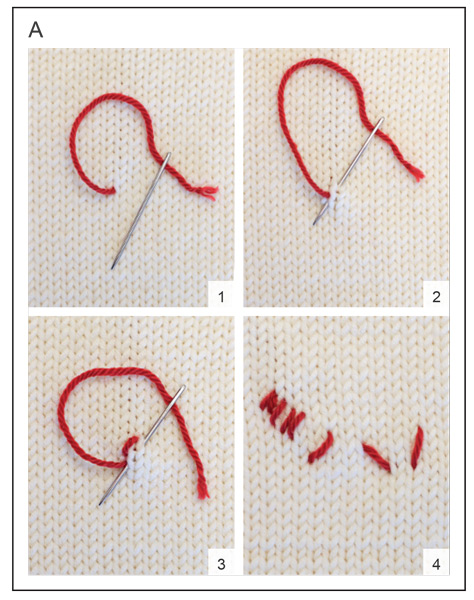
|
|||||||

|
|||||||
|
Have you made this or any other of our designs? Tag your pictures in social media with #dropsdesign so we can see them! Do you need help with this pattern?You'll find tutorial videos, a Comments/Questions area and more by visiting the pattern on garnstudio.com. © 1982-2024 DROPS Design A/S. We reserve all rights. This document, including all its sub-sections, has copyrights. Read more about what you can do with our patterns at the bottom of each pattern on our site. |
|||||||








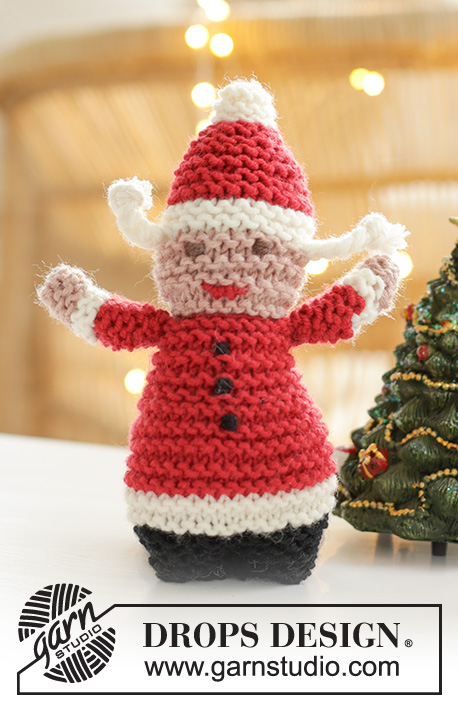


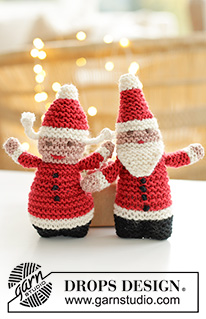

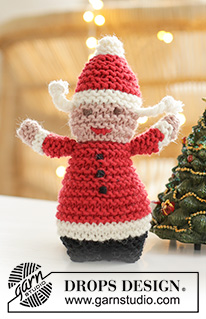



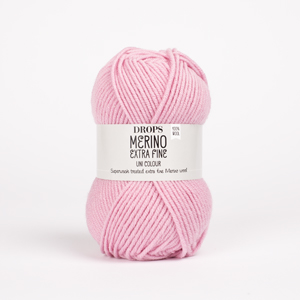
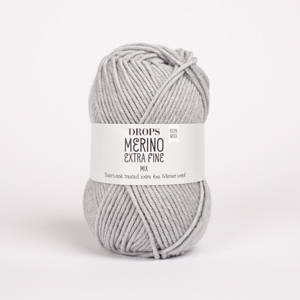



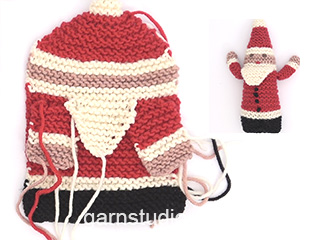
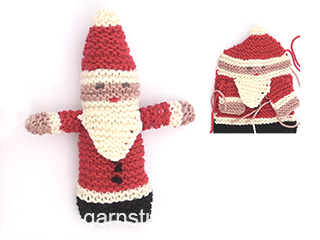























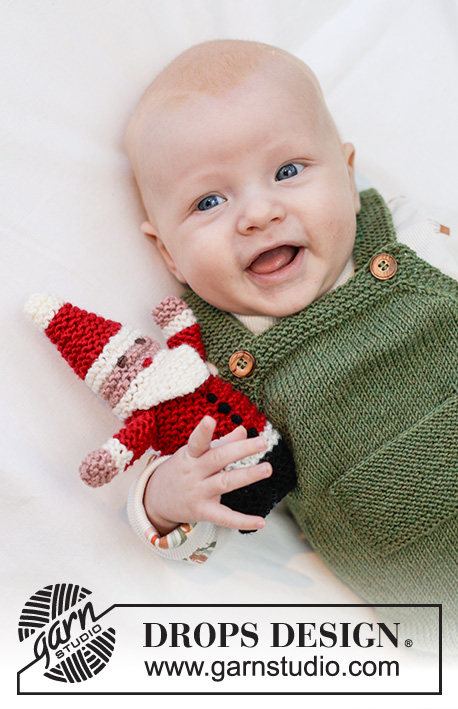






Comments / Questions (2)
What are the approximate dimensions of these two cute little figures? Thanks,
15.12.2023 - 21:06DROPS Design answered:
Hi, the height of each of them is approximately 13 cm. Happy knitting!
17.12.2023 - 07:43Her mangler der nogle billeder. Det ligner at I har sat nogle hæklediagrammer ind ved en fejl.
15.12.2023 - 16:26